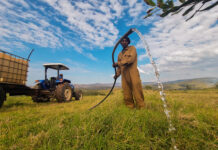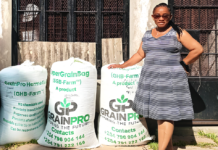Anyone in the agriculture business will tell you soil health is vital. Having good land health means having little erosion and water has an easier time infiltrating the earth. This means the nutrient cycle, efficiency and effectiveness of farmland greatly improves.
However, improving your soil’s overall health can often be a challenge. Many factors are at play and in some cases, new methods will be necessary. To ensure your crops have the best chance of growing effectively and are less likely to suffer from diseases, here are five tips to improve soil health.
1. Less Disturbed Soil Is Happy Soil
Soil that is constantly disturbed is weak, resulting in a loss of nutrients. Tillage can cause more harm than good — especially if you do it frequently. This is due to disrupting the dirt’s structure, which can lead to erosion and poor water infiltration — water not absorbing into the soil and resulting in runoff.
Decreasing the overall movement of your earth means it keeps the pores intact and helps with water absorption. Consider utilizing no-till farming, which could drastically increase your dirt’s overall health. As with anything, you must use the correct equipment and information for the task.
2. Crop Diversification Helps Refresh
In addition to the many benefits a variety of crops can provide, it can also increase soil health because different plants mean more food for the land. In other words, the diversity of crops will interact with different parts of soil life, which increases overall dirt quality.
3. Crop Rotation Is a Necessity
Crop rotation is where various plants are grown in the same location at different times. This allows the soil to interact with multiple nutrients instead of only having the same ones in the ground. The process usually combines plants that capture nutrients and ones that use them.
This results in healthier dirt, which can help with pest control and diseases. Another major benefit crop rotation has is it can significantly increase the overall quality of produce and even the yield quantity. If improved soil health is your primary goal, this is definitely an option to consider.
4. Cover Crops are Essential
Cover crops are an essential part of establishing healthy soil. Their purpose isn’t to bring in a profit but to protect and improve the land. Some cover crops can even help with water runoff due to them creating soil pores that aid with water absorption.
These crops increase the overall ability of the ecosystem to capture sunlight, which can lead to a build-up of carbon in the soil. This helps create organic matter that improves the quality of the dirt even more. In addition to preventing erosion and soil degradation, they also protect the soil structure from being disturbed due to the vegetation growing on top of the soil.
5. Soil Cover Is a Good Thing
Soil cover plays an integral role in the health of your farmland. Heavy rainfall can destroy the dirt’s structure, breaking pores and hindering water’s ability to absorb into the soil.
In short, crop residue — stems, leaves, seeds and roots — acts as a protective layer for the ground, decreasing water evaporation and increasing water infiltration. To maximize soil health, ensure you don’t disrupt the soil cover.
Getting More Out of Your Soil
To get the most out of your crops, take proper care of your land by providing it with what it needs. Diversification of plants, decrease in overall soil disruption, crop rotation, cover crops and soil cover are all essential ways you can enhance the quality of your ground. They help result in better farmland yields.








